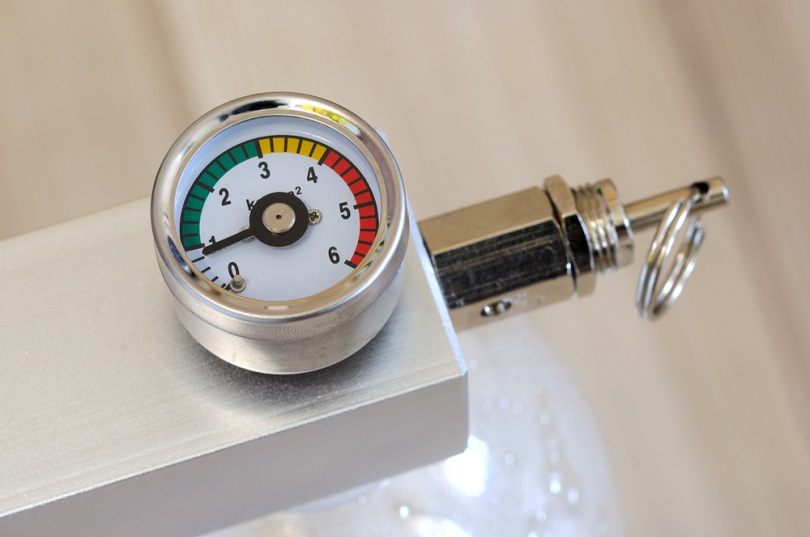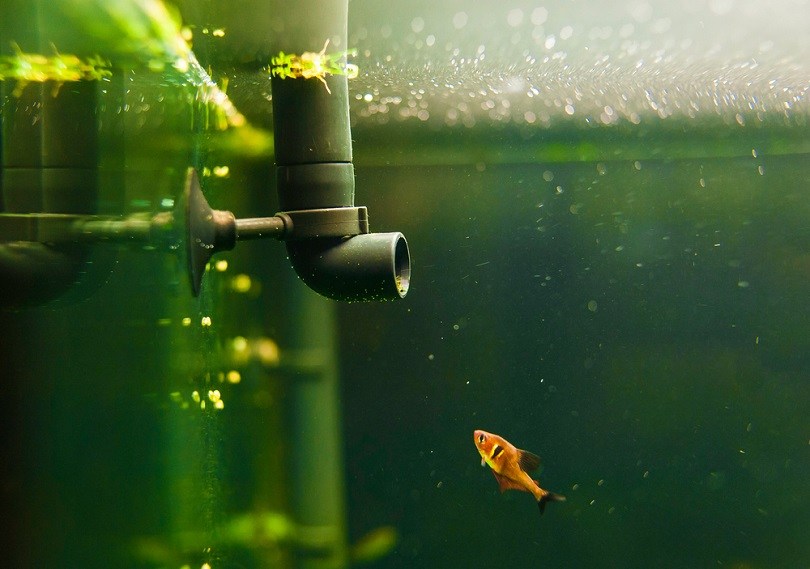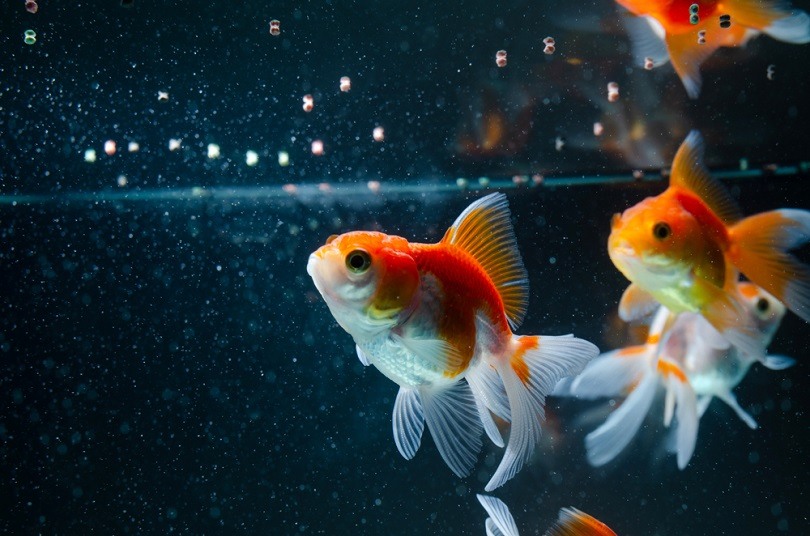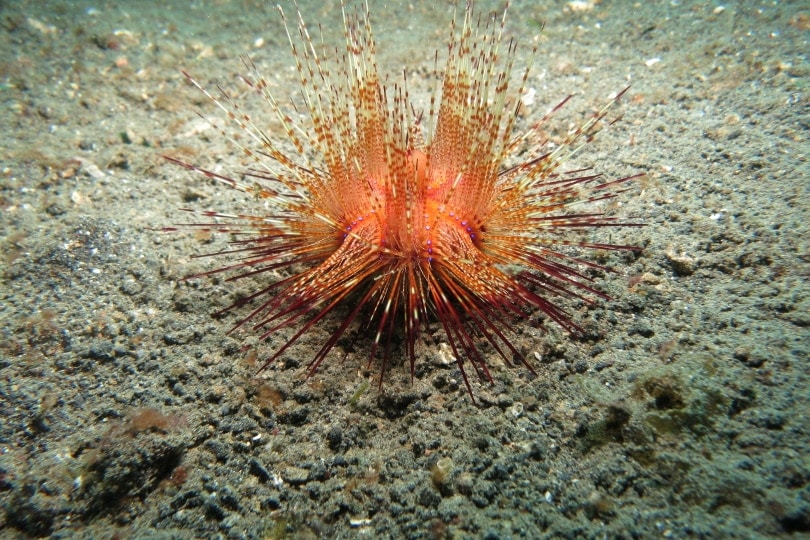How to Add CO2 to an Aquarium: 4 Easy Methods & Safe Application

Updated on

If you’re new to keeping a planted aquarium, you’ve likely been reading up on how to care for your new plants. In doing your research, did you notice CO2 coming up frequently? In most care guides for aquatic plants, the CO2 needs of the plant are mentioned.
Trying to take in all this information about CO2 and how it relates to your aquatic plants can be confusing and overwhelming. Don’t worry, though, because adding CO2 to your tank is easier than you think!
But first, what is CO2 and why does it matter?
What Is CO2?
CO2 is carbon dioxide, which is the byproduct of respiration. When we breathe, we breathe in oxygen and breathe out CO2. The same is true for your fish! Your tank should always have a supply of oxygen in it for the fish and invertebrates, and they will in turn ensure the tank always has a supply of CO2 for the plants.
If you aren’t sure what the CO2 levels in your aquarium are, products like Fluval CO2 Aquarium Indicator can be beneficial to you.

Why Does My Aquarium Need CO2?
Plants need CO2 in order to produce energy via photosynthesis. There’s a very scientific explanation for this, but the simplest explanation is that plants need energy to grow. CO2 and light go hand-in-hand when it comes to plant survival. A plant with no CO2 that is receiving light will not survive, and vice versa.
Carbon dioxide should only be added to planted aquariums and will be useless and harmful in a standard aquarium.
The plants in your tank will pull the CO2 from the water and absorb light with their leaves, and then use these things to produce energy in the form of sugar molecules. These sugar molecules are used as energy to stimulate growth, rooting, damage repair, and reproduction.
Some plants will not require added CO2, instead absorbing the CO2 produced by fish. Generally, the lower the light requirement of a plant, the less CO2 it needs. This means that the higher the light requirement, the more CO2 the plant needs. If your tank is populated with low-light plants that are receiving a few hours of natural or artificial lighting daily, then they are likely content with the amount of CO2 already circulating in the water. If your tank is high-tech and features high-light plants, then you likely need to add extra CO2 to your tank.
How to Add CO2 to Your Aquarium:
- More Fish: If your tank has the space, adding more oxygen-breathing creatures to your tank will increase the CO2 being released into the tank. Fish will usually produce enough CO2 for low-light plants and lots of fish will usually produce enough for medium-light plants to live but not thrive.
- CO2 Supplements: CO2 supplements are carbon-based products and are the easiest way to add enough CO2 to your tank to stimulate the growth and maintain the livelihood of high-light plants. Products like API CO2 Booster are easy to use and come with clear instructions on how much to add to the tank. It’s as easy as reading the directions, measuring the product, and pouring it in.
- Inline Atomizer: These products, like the NilocG Aquatics Intense Atomic Inline CO2 Atomizer, are connected to the tubing of the filtration system and works best with external systems, like canister filters. Atomizers allow for CO2 to be forced into the water before being returned to the tank.
- CO2 Injection: CO2 injectors are a product that uses a pressurized cartridge or canister to force CO2 into the tank water. These products can be small and cost-effective, like the Fluval Mini Pressurized CO2 Kit, or larger and more expensive, like the ZRDR CO2 Generator System.
How to Add CO2 Naturally Into an Aquarium
The first approach to adding CO2 into the aquarium may be going the natural route.
- A gas infuser kit is a good way to naturally add extra CO2 into your aquarium. Chemicals are not required, and you will need to use a diffusion system to transfer the carbon dioxide into your aquarium. This is a top choice for those who want a constant source of carbon dioxide in their planted aquarium. You will need to plug in the pump for the infuser and run the gas under the water. This makes it easily able to be dissolved into your aquarium’s water column. We recommend the Dennerle CO2 micro flipper fish diffuser.
- Fish poop is a natural source of carbon dioxide. Having an aquarium with minimal plants but numerous inhabitants provides your plants with a natural CO2 source from nutrient-rich waste.
- Bacterial respiration increases the carbon dioxide level in your aquarium over time. This is not the most successful method, but it works for plants that need none to a minimal amount of CO2. This is a natural occurrence that cannot be supplemented by you, but rather by the aquarium’s natural environment and ecosystem.
How to Add CO2 with Aquarium Chemicals
There are a variety of CO2 supplements you can add to your planted aquarium. Using a quality brand and following the correct dosage can safely add carbon dioxide to your aquarium.
- The API CO2 booster is an excellent supplement to add to your planted aquariums. It is safe in the recommended doses as seen on the label for most fish and invertebrates.
- Dennerle-Carbo-Elixer
- Seachem Flourish
- ISTA CO2 tabs
- Amazon Sword
- Wentii
- Polysperma
- Anubias
- Ambulia
- Bacopa Monnieri
How Much CO2 Is Safe for an Aquarium?
The ideal content of carbon dioxide depends on the size and volume of water your tank bears. A general rule of thumb is 30 ppm per liter. This is safe for nearly all aquatic life. Some inhabitants may have adverse reactions to carbon dioxide supplementation. You should slowly increase the amount of carbon dioxide in your aquarium if you have a sensitive species of fish or invertebrate.

When Should You Add CO2?
If you are unsure when to add CO2, you can do a visual check on your plants to see if they are lacking carbon dioxide supplementation.
- The leaves are turning brown
- Brown spots are developing across the plant
- Slow growth
- Reproduction has halted
- Poor photosynthesizing
- A low oxygen output is produced
The Benefits of CO2 in a Planted Aquarium
Carbon dioxide provides your aquatic plants with enough supplementation to help their plants grow to their full potential. It makes photosynthesis easier for your plants. This is important as it helps your plant to produce its food and oxygen which is essential for your aquarium’s environment.
It helps planted aquariums flourish and produce lovely vibrant green leaves and shoots.
The Advantages and Disadvantages of Using CO2 Supplements
- Increase of oxygen availability in the aquarium
- Plants reproduce faster
- Enhances the color of your aquatic plants
- The plants are healthy enough to naturally absorb harmful parameters in the water that may otherwise harm your inhabitants
- Low oxygen availability
- pH drops significantly
How CO2 Affects the Aquarium Inhabitants
An overdose of carbon dioxide in an aquarium is detrimental to the inhabitant’s health. It will cause a depletion of oxygen, especially during nightfall and the plants start to use up the available oxygen in the water. This will lead to your fish gasping at the surface and eventually suffocating. A drop in the pH level will cause pH shock in your fish, leading to a weakened immune system and the opportunity to fall ill and die.
In Conclusion
Adding CO2 to your aquarium can seem really overwhelming, especially if biology and chemistry aren’t your thing. The good thing is that there are many ways to add CO2 to your aquarium and multiple products on the market to help you achieve higher CO2 levels.
Once you start adding CO2 supplementation to your tank, you’ll see a marked difference in the growth of your plants. Your low-tech plants will take off and require more frequent trims, and your high-tech plants will begin to thrive. You’ll have everyone asking what your secret to such a successful tank is in no time!
Check out some of our other popular how-to guides:
- How to Avoid Unwanted Fish Breeding in Your Aquarium
- How to Get Rid of Snails in an Aquarium (Beginner’s Guide)
Featured Image Credit: tetiana_u, Shutterstock










